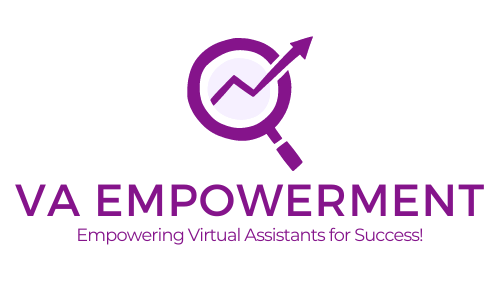How Do I Handle Disagreements Or Conflicts With Clients As A Virtual Assistant?
Disagreements or conflicts with clients can be one of the most difficult parts of your job as a virtual assistant. In this post, we’ll look at some of the most effective ways to resolve conflicts, making sure that you and your clients feel heard, heard, and happy with the outcome.

Understanding the Client’s Perspective
When conflict or disagreement arises, it’s important as a virtual assistant to understand your client’s point of view. Effective listening and empathy are key to resolving these issues.
Listening to your clients can help you gain a better understanding of what they’re going through, what’s bothering them, and what they need. This way, you can better empathize with them and find a way to work together to resolve the conflict.
Ask for clarification
If there’s a disagreement or disagreement, you’ll want to know what’s going on. Ask questions and make sure you’re getting to the bottom of what’s going on. This shows that you’re willing to listen and that you value your clients’ input. You’ll also be able to clear up any misconceptions or misunderstandings that may be causing the conflict.
Putting yourself in the client’s shoes is a powerful way to empathize with their perspective. Imagine yourself in their position – the challenges they face, their expectations, and their desired outcomes. By doing this, you can gain a better understanding of their motivations and communicate more effectively. It also helps you approach conflicts with compassion and a genuine desire to find a resolution that meets both parties’ needs.
Open and Transparent Communication
Open and transparent communication is crucial in managing conflicts as a virtual assistant. Regular check-ins and updates with your clients can help avoid disputes by keeping all parties informed and involved throughout the project. Providing frequent progress reports allows your clients to have a clear understanding of the work being done and reduces the likelihood of misunderstandings.
Encouraging feedback from your clients is another important aspect of open communication. By actively seeking their input and suggestions, you create an open dialogue that fosters trust and collaboration. Emphasize that their feedback is valuable and welcome, as it can lead to improvements and prevent conflicts from escalating.
Setting realistic expectations is vital in managing conflicts. Clearly define the scope and deliverables of the project from the start, making sure that both parties are on the same page. Discuss any limitations or constraints upfront, such as deadlines, available resources, or specific skills required. By establishing realistic expectations, you minimize the chance of disputes arising due to unrealized goals.
Managing Expectations
Effectively managing expectations is a key factor in resolving conflicts with clients as a virtual assistant. Clearly defining the scope and deliverables of the project helps set the foundation for establishing realistic expectations. By outlining the specific tasks you will undertake and the desired outcomes, you provide a clear framework for your clients to understand what they can expect from your services.
Additionally, discussing limitations upfront is crucial in managing expectations. Be open and honest about any constraints that may affect the project’s timeline or scope. This could include factors such as the availability of resources, unforeseen circumstances, or technical difficulties. By addressing these limitations at the beginning, you can avoid misunderstandings and potential conflicts later on.
Negotiating mutually agreeable timelines is another effective strategy for managing expectations. Collaborate with your clients to establish deadlines that are both realistic and achievable. This allows both parties to have a clear understanding of the project’s timeline and minimizes the chances of conflicts arising from missed deadlines or delays. By actively involving your client in the timeline negotiation process, you foster a spirit of cooperation and shared responsibility.
Problem-solving and Negotiation
When conflicts or disagreements arise with your clients, effective problem-solving and negotiation skills are essential in finding resolutions. A critical step in problem-solving is identifying the root cause of the conflict. Take the time to analyze the situation and understand the underlying issues that contributed to the disagreement. This helps you address the core problem instead of merely treating the symptoms.
Brainstorming alternative solutions is an effective way to resolve conflicts. Encourage open discussion with your client to generate multiple options for resolving the conflict. Consider each suggestion’s pros and cons and evaluate their feasibility. By involving your client in the brainstorming process, you empower them to be part of the solution and increase the chances of finding a mutually beneficial resolution.
Finding common ground is essential in resolving conflicts with your clients. Look for shared interests or objectives that can bridge the gap between differing perspectives. Focus on areas of agreement and build upon them to create a foundation for finding a resolution. By emphasizing common ground, you can create a collaborative and cooperative environment that fosters compromise and understanding.

Documenting Agreements and Changes
To ensure clarity and avoid future conflicts, it is essential to maintain written records of agreements and changes. Documenting the agreed-upon scope, deliverables, and timelines helps keep both parties accountable and reduces the chances of misunderstandings. By having a written record, you can refer back to it if any discrepancies or disputes arise.
Confirming decisions in writing is another crucial step in effective communication. After discussing resolutions or changes, send a summary or confirmation email to your clients. This serves as a written record of the agreed-upon decisions and provides an opportunity for clients to review and provide feedback before moving forward. By confirming decisions in writing, you avoid potential misunderstandings and maintain a transparent and accountable working relationship.
Updating contracts or agreements may be necessary if conflicts lead to significant changes in the project’s scope or timeline. Make sure to incorporate any modifications or adjustments into the contractual agreements between you and your clients. This helps align expectations and obligations, providing a solid foundation for the continued working relationship.
Seeking Mediation or Third-Party Assistance
Contacting a virtual assistant network or community can also be beneficial when seeking assistance. Reach out to fellow virtual assistants who may have faced similar challenges and seek their advice or support. By tapping into this community, you can gain valuable insights and potential solutions that you may not have considered otherwise.
Offering referrals to other virtual assistants may also be an option in certain situations. If the conflict arises from a misalignment of skills or preferences, suggesting alternative virtual assistants who may be better suited to meet the client’s needs demonstrates professionalism and concern for their satisfaction. This referral can also ensure a smooth transition and minimize disruptions to their business operations.

Remaining Professional and Calm
When conflicts arise, it is crucial to maintain professionalism and calmness throughout the process. Avoid personal attacks or arguments, even if you feel personally attacked or offended. Instead, focus on the objective issues and solutions at hand. By keeping emotions in check, you can facilitate a more productive and objective discussion.
Taking breaks to de-escalate heated situations is an effective strategy. If emotions are running high and tensions are escalating, suggest taking a break to cool down and regain composure. Stepping away from the conflict can help both parties gain perspective and approach the discussion with a calmer mindset. Communicate the intention for a break respectfully and propose a time to reconvene and continue the conversation constructively.
Using objective language when discussing conflicts is crucial in maintaining professionalism. Stick to the facts and avoid making assumptions or personal interpretations. Focus on the issue at hand and strive for a language that conveys neutrality and objectivity. By using objective language, you can foster a more rational and non-confrontational atmosphere, enabling constructive discussions.
Learning from Past Conflicts
Reflecting on previous conflicts and disagreements is an important step in personal growth and improvement. Take the time to analyze the circumstances surrounding past conflicts and identify any patterns or triggers that may have contributed to their occurrence. By understanding these patterns, you can make necessary changes or improvements in your approach to prevent similar conflicts in the future.
Identifying patterns or triggers requires self-reflection and an honest evaluation of your actions and behaviors. Consider how you responded to conflicts and whether there were any recurring themes or reactions. By recognizing these patterns, you can develop strategies to address them proactively and create a more harmonious working environment.
Making necessary changes or improvements based on your reflections is a crucial step in continually developing your conflict management skills. Determine what actions or approaches you can modify to avoid or minimize conflicts in the future. This could include enhancing your communication skills, refining your project management techniques, or seeking additional training or resources. By actively implementing these changes, you create a positive feedback loop that fosters personal and professional growth.
Self-care and Emotional Support
Handling conflicts and disagreements can be emotionally draining, so practicing self-care techniques is vital. Prioritize your well-being by engaging in activities that promote relaxation, stress relief, and mental well-being. Whether it’s exercising, practicing mindfulness, or pursuing hobbies, taking care of yourself allows you to approach conflicts with a clear and focused mindset.
Seeking support from peers can provide valuable insight and emotional assistance during challenging times. Connect with other virtual assistants or professionals in similar fields to share experiences, seek advice, or simply vent your frustrations. By building a support network, you create a safe space to discuss conflicts and gain perspective from others who may have faced similar situations.
Consider professional counseling if conflicts and disagreements consistently take a toll on your emotional well-being. Speaking with a therapist or counselor can provide you with valuable tools and strategies to manage stress, enhance communication skills, and develop emotional resilience. Seeking professional help is never a sign of weakness, but rather a proactive step towards maintaining your mental health.
Knowing When to Part Ways
In some cases, conflicts may become irreconcilable, leading to the realization that parting ways with a client is the best solution. Recognizing these irreconcilable differences is crucial in avoiding prolonged and detrimental conflicts. Evaluate whether the conflict is impacting your ability to fulfill your role as a virtual assistant effectively or if it compromises your professional integrity.
When discussing termination options with a client, approach the conversation professionally and respectfully. Clearly communicate your reasons for considering parting ways and provide examples of the challenges faced. Avoid assigning blame or engaging in a blame game. Instead, focus on the objective differences and emphasize your commitment to finding a mutually beneficial solution.
Ensuring a smooth transition for the client is essential when parting ways. Offer to assist them in finding an alternative virtual assistant or provide guidance to help them manage the transition smoothly. This demonstrates your professionalism and genuine concern for their business’s continuity, even in conflict-ridden situations.
In conclusion, conflicts and disagreements can be challenging as a virtual assistant, but they can also be opportunities for growth and improvement. By understanding the client’s perspective, practicing open and transparent communication, managing expectations, problem-solving, documenting agreements, seeking assistance when needed, maintaining professionalism, reflecting on past conflicts, prioritizing self-care, and knowing when to part ways, you can effectively handle conflicts and build stronger and more resilient professional relationships.

